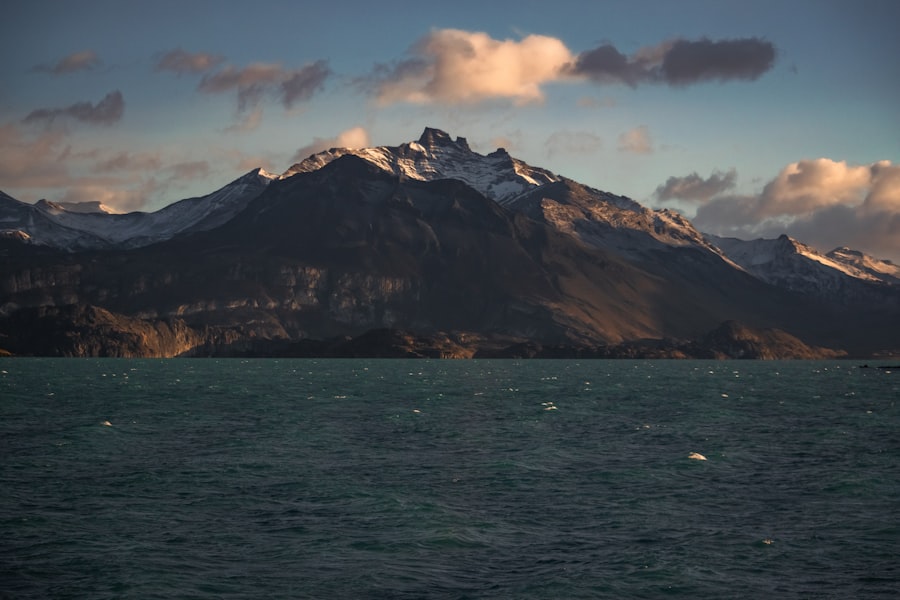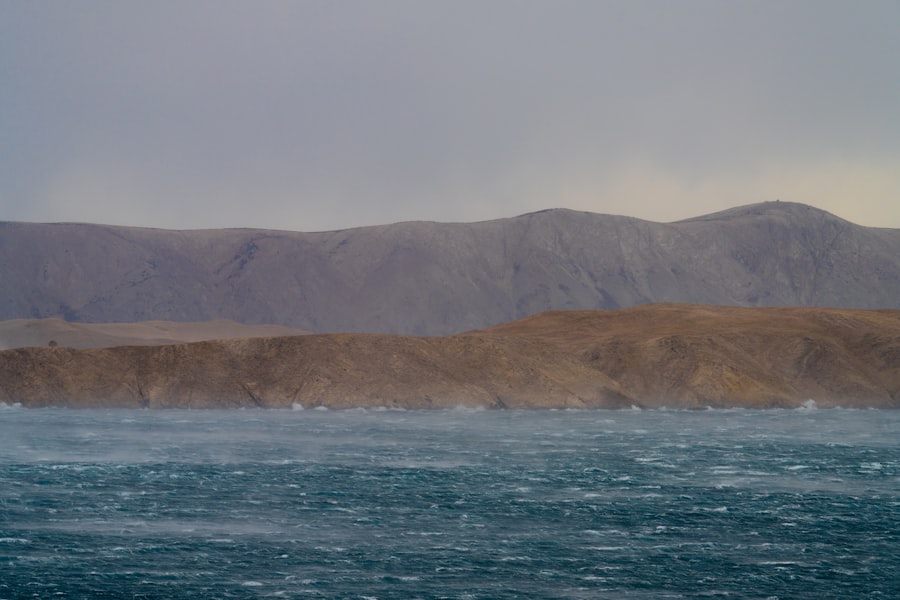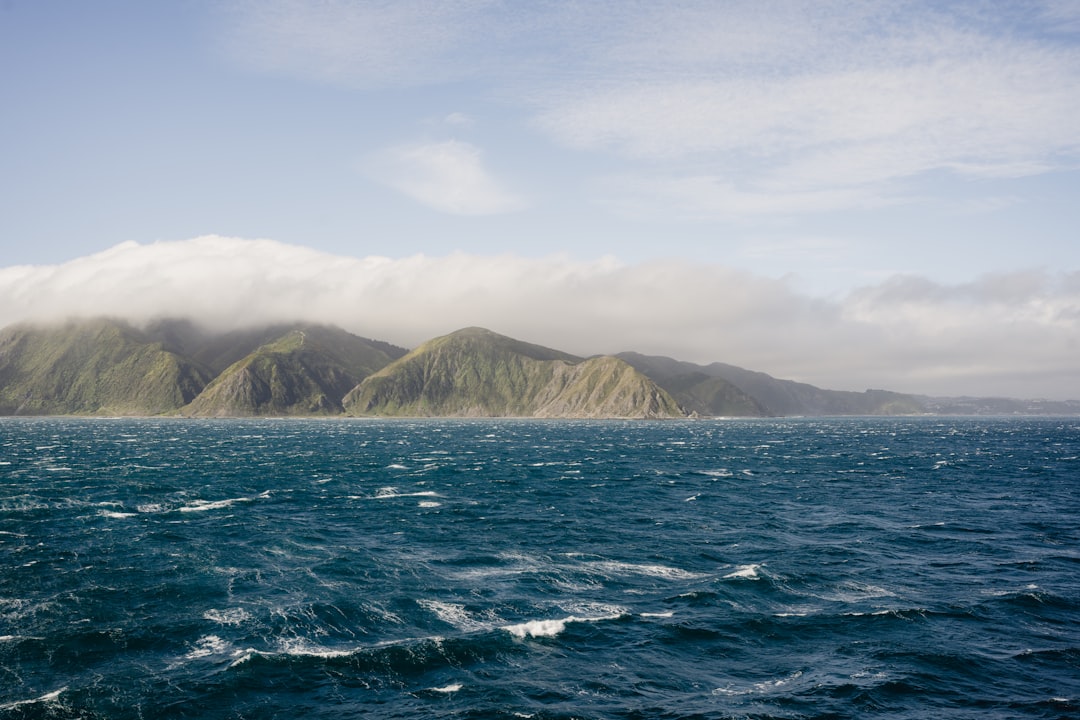The Drake Passage, a body of water that separates South America from Antarctica, is renowned for its tumultuous seas and rich marine biodiversity. Stretching approximately 800 kilometers (500 miles) between Cape Horn and the Antarctic Peninsula, this passage is not only a critical maritime route but also a significant area for scientific research and exploration. The waters of the Drake Passage are often characterized by their unpredictable weather patterns and strong currents, making it both a challenging and fascinating region for sailors and researchers alike.
Navigating the Drake Passage is often considered a rite of passage for those venturing to Antarctica. The passage is named after Sir Francis Drake, the English sea captain who was the first to navigate these waters in the late 16th century. Today, it serves as a vital link for vessels traveling to and from the southernmost continent, providing access to one of the most remote and pristine environments on Earth.
The Drake Passage is not merely a geographical feature; it embodies the spirit of adventure and discovery that has driven explorers for centuries.
Key Takeaways
- The Drake Passage is a body of water between South America’s Cape Horn and the South Shetland Islands of Antarctica, known for its rough seas and challenging weather conditions.
- The passage is crucial for Antarctic exploration as it provides the only navigable route between the Pacific and Atlantic Oceans, allowing access to the continent for scientific research and tourism.
- The wildlife of the Drake Passage includes a diverse range of species such as whales, seals, and seabirds, making it a popular destination for wildlife enthusiasts and photographers.
- The history of the Drake Passage is filled with tales of exploration, shipwrecks, and scientific discovery, dating back to the early expeditions of the 16th century.
- The weather and climate in the Drake Passage are characterized by strong winds, rough seas, and rapidly changing conditions, making it a challenging environment for travelers and researchers alike.
The Importance of the Drake Passage for Antarctic Exploration
The Drake Passage holds immense significance for Antarctic exploration, serving as the primary maritime route for expeditions heading to the icy continent. Its strategic location allows researchers, scientists, and adventurers to access Antarctica’s unique ecosystems and study its climate, wildlife, and geology. The passage acts as a gateway to one of the last frontiers on Earth, where human curiosity meets the raw power of nature.
Moreover, the Drake Passage is crucial for understanding global climate patterns. The waters here are part of the Southern Ocean, which plays a vital role in regulating the Earth’s climate by absorbing carbon dioxide and influencing ocean currents. Researchers utilize this passage to study the effects of climate change on polar regions, making it an essential area for scientific inquiry.
The data collected from expeditions through the Drake Passage contributes to a broader understanding of environmental changes that impact not only Antarctica but also the entire planet.
The Wildlife of the Drake Passage

The Drake Passage is teeming with diverse marine life, making it a hotspot for wildlife enthusiasts and researchers alike. The nutrient-rich waters support a variety of species, including krill, which serves as a fundamental food source for many larger animals. This abundance of krill attracts an array of wildlife, including seals, whales, and seabirds, creating a vibrant ecosystem that thrives in this challenging environment.
Among the most iconic inhabitants of the Drake Passage are the various species of whales that migrate through its waters. Humpback whales, orcas, and minke whales are commonly spotted during expeditions, captivating travelers with their majestic presence. Additionally, seabirds such as albatrosses and petrels soar above the waves, showcasing their remarkable adaptations to life in this harsh marine environment.
The wildlife of the Drake Passage not only enriches the experience for those who traverse its waters but also highlights the importance of conservation efforts in preserving these fragile ecosystems.
The History of the Drake Passage
| Year | Event |
|---|---|
| 1616 | Discovery of the Drake Passage by Sir Francis Drake |
| 1839 | First recorded crossing of the Drake Passage by a ship |
| 1940 | First air reconnaissance of the Drake Passage |
| 1970 | First successful solo crossing of the Drake Passage by sea kayak |
| 2014 | First successful swim across the Drake Passage |
The history of the Drake Passage is steeped in exploration and adventure. Named after Sir Francis Drake, who navigated these waters in 1578 during his circumnavigation of the globe, the passage has long been a point of interest for sailors and explorers. In the centuries that followed, it became a critical route for whalers and sealers seeking fortune in the rich waters surrounding Antarctica.
Throughout history, many notable expeditions have traversed the Drake Passage, contributing to our understanding of polar regions. Explorers such as Ernest Shackleton and Robert Falcon Scott faced treacherous conditions while navigating these waters in their quests to reach the South Pole. Their journeys not only highlighted the challenges posed by the Drake Passage but also underscored humanity’s enduring spirit of exploration.
Today, this historical legacy continues to inspire modern adventurers who seek to follow in their footsteps.
Weather and Climate in the Drake Passage
The weather in the Drake Passage is notoriously unpredictable, characterized by rapidly changing conditions that can shift from calm to stormy within moments. This variability is primarily due to its location at the convergence of several ocean currents, including the Antarctic Circumpolar Current. As a result, sailors must be prepared for everything from tranquil seas to fierce storms that can create towering waves.
The climate in this region is classified as subpolar oceanic, with cold temperatures prevailing year-round. During summer months, temperatures can reach slightly above freezing, while winter brings frigid conditions that can plunge well below zero. These harsh weather patterns not only pose challenges for navigation but also play a crucial role in shaping the unique ecosystems found within the Drake Passage.
Understanding these climatic conditions is essential for researchers studying climate change and its impacts on polar environments.
Crossing the Drake Passage: Tips for Travelers

For travelers embarking on an adventure through the Drake Passage, preparation is key to ensuring a safe and enjoyable journey. First and foremost, it is essential to choose a reputable expedition company with experience navigating these challenging waters. Travelers should also be aware of their own comfort levels with rough seas; those prone to seasickness may want to consult with a medical professional about preventative measures before setting sail.
Packing appropriately is another crucial aspect of preparing for a crossing. Layered clothing is recommended to accommodate fluctuating temperatures and weather conditions. Waterproof gear is also advisable, as splashes from waves can be common during rough passages.
Additionally, travelers should take advantage of opportunities to learn from onboard naturalists and guides who can provide valuable insights into the unique ecosystems and wildlife encountered along the way.
Scientific Research in the Drake Passage
The Drake Passage serves as a vital site for scientific research focused on understanding marine ecosystems and climate dynamics. Researchers from around the world conduct studies in this region to gather data on ocean currents, temperature variations, and marine biodiversity. The information collected contributes significantly to global climate models and helps scientists assess how changes in polar regions may affect weather patterns worldwide.
One notable area of research involves studying krill populations in the Drake Passage. As a keystone species in the Southern Ocean ecosystem, krill play a crucial role in supporting various marine life forms. Scientists monitor their populations to understand how environmental changes impact their abundance and distribution.
This research is essential not only for conservation efforts but also for predicting how shifts in krill populations may affect larger predators such as whales and seals.
Conservation Efforts in the Drake Passage
Conservation efforts in the Drake Passage are critical for protecting its unique ecosystems and ensuring sustainable practices in this fragile environment. Various organizations work tirelessly to promote awareness about the importance of preserving marine biodiversity and mitigating human impacts on these waters. Initiatives include establishing marine protected areas (MPAs) that safeguard critical habitats from overfishing and pollution.
International cooperation plays a significant role in conservation efforts within the Drake Passage. Countries involved in Antarctic governance collaborate through treaties such as the Antarctic Treaty System, which aims to preserve the continent’s ecological integrity while promoting scientific research. These collaborative efforts are essential for addressing challenges posed by climate change and ensuring that future generations can continue to explore and appreciate this remarkable region.
Adventure Tourism in the Drake Passage
Adventure tourism has flourished in recent years as more travelers seek unique experiences in remote locations like the Drake Passage. This surge in interest has led to an increase in expedition cruises that offer opportunities to explore Antarctica’s stunning landscapes and diverse wildlife while navigating through these iconic waters. Travelers are drawn not only by the allure of adventure but also by the chance to witness firsthand one of Earth’s last great wildernesses.
While adventure tourism brings economic benefits to local communities and promotes awareness about environmental issues, it also raises concerns about sustainability and conservation. Responsible tourism practices are essential to minimize human impact on delicate ecosystems within the Drake Passage. Tour operators are increasingly adopting eco-friendly practices, such as limiting group sizes and adhering to strict guidelines that protect wildlife habitats while providing travelers with unforgettable experiences.
Chile’s Role as the Gateway to Antarctica
Chile plays a pivotal role as a gateway to Antarctica, with its southern ports serving as primary departure points for expeditions heading into the icy continent. Punta Arenas, located at the southern tip of Chilean Patagonia, has become a bustling hub for adventure tourism and scientific research alike. Its strategic location allows travelers easy access to both the Drake Passage and Antarctica itself.
The Chilean government actively supports initiatives aimed at promoting sustainable tourism while preserving its natural resources.
This commitment ensures that visitors can continue to explore Antarctica’s wonders while minimizing their ecological footprint.
The Future of Exploration in the Drake Passage
As interest in polar exploration continues to grow, the future of exploration in the Drake Passage looks promising yet challenging. Advances in technology are enabling researchers to gather more comprehensive data about this remote region than ever before. Innovations such as autonomous underwater vehicles (AUVs) allow scientists to explore depths previously inaccessible, providing new insights into marine ecosystems.
However, with increased exploration comes heightened responsibility regarding conservation efforts. As more travelers venture into these pristine waters, it becomes imperative to prioritize sustainable practices that protect fragile ecosystems from overexploitation and pollution. The future of exploration in the Drake Passage will depend on finding a balance between adventure and preservation—ensuring that this remarkable region remains a source of wonder for generations to come.
In conclusion, the Drake Passage stands as a testament to nature’s power and beauty while serving as an essential conduit for exploration and scientific research. Its rich history, diverse wildlife, unpredictable weather patterns, and role as a gateway to Antarctica make it a focal point for adventurers and researchers alike. As humanity continues to explore this remote region, it is crucial to prioritize conservation efforts that safeguard its unique ecosystems for future generations to appreciate and study.
The Drake Passage, a notorious stretch of water between the southern tip of South America and Antarctica, is a significant route for maritime navigation and a fascinating subject for those interested in geography and oceanography. For more insights into the geographical significance and challenges of navigating this treacherous passage, you can explore a related article on MyGeoQuest. This article delves into the historical and contemporary importance of the Drake Passage, offering a comprehensive overview of its impact on global maritime routes.
WATCH NOW! Drake Passage: Earth’s Deadliest Waters Revealed
FAQs
What is the Drake Passage in Chile?
The Drake Passage is the body of water between the southern tip of South America (Cape Horn) and the South Shetland Islands of Antarctica. It is known for its rough seas and challenging sailing conditions.
Why is the Drake Passage significant?
The Drake Passage is significant because it is the shortest and most direct route between Antarctica and the rest of the world. It is also a crucial area for scientific research and exploration due to its unique oceanographic and atmospheric conditions.
What is the weather like in the Drake Passage?
The weather in the Drake Passage is characterized by strong winds, high waves, and rapidly changing conditions. It is known for its rough seas and challenging sailing conditions, making it one of the most notorious stretches of water in the world.
What wildlife can be found in the Drake Passage?
The Drake Passage is home to a diverse range of wildlife, including various species of seabirds, whales, seals, and penguins. It is a popular destination for wildlife enthusiasts and nature lovers.
How can one travel through the Drake Passage?
Traveling through the Drake Passage can be done by cruise ship or expedition vessel. Many tour operators offer expeditions to Antarctica that include a crossing of the Drake Passage. It is also possible to fly over the Drake Passage on certain expeditions.
